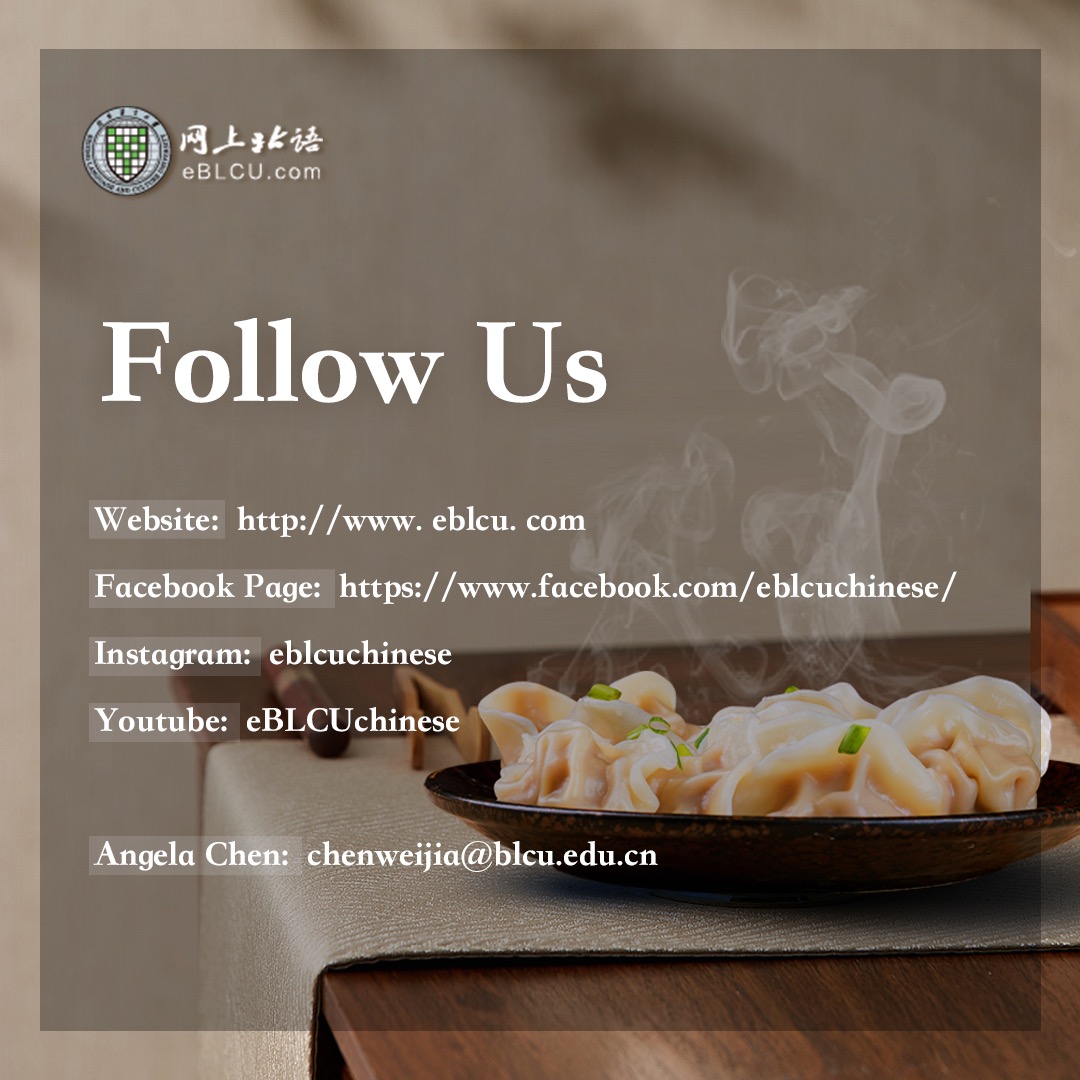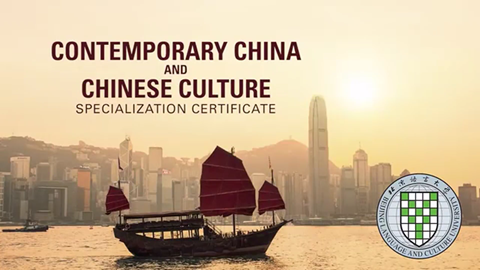BLCU Continuing Education College
Chinese Language Education Platform

BLCU Continuing Education College
Chinese Language Education Platform

The Winter Solstice (冬至 / dōngzhì) is traditionally celebrated on December 22nd.
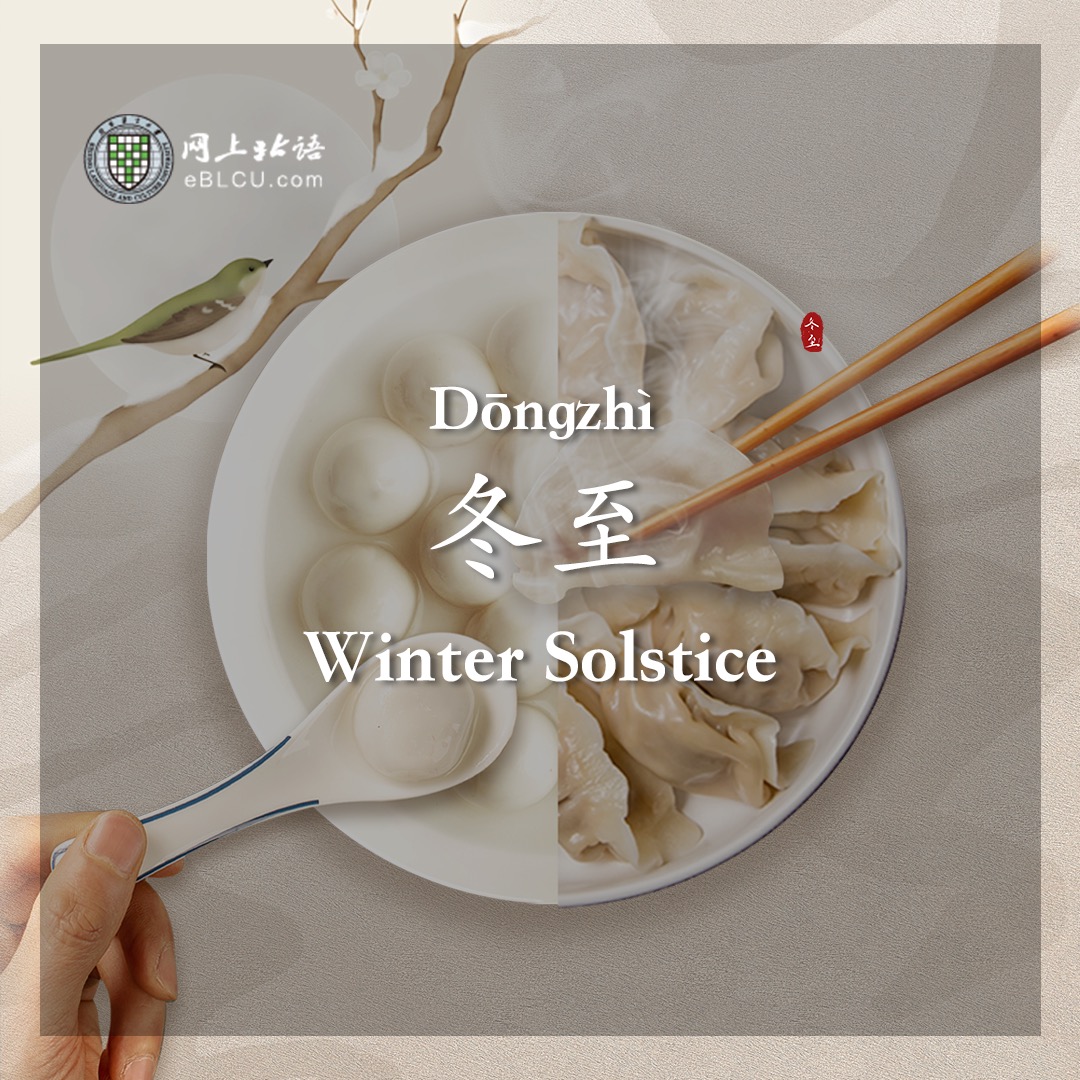 This pivotal moment in the lunar calendar, known as one of the 24 Solar Terms (二十四节气 / èrshísì jiéqì), marks a significant transition--the longest night and shortest day of the year in the Northern Hemisphere.
This pivotal moment in the lunar calendar, known as one of the 24 Solar Terms (二十四节气 / èrshísì jiéqì), marks a significant transition--the longest night and shortest day of the year in the Northern Hemisphere.
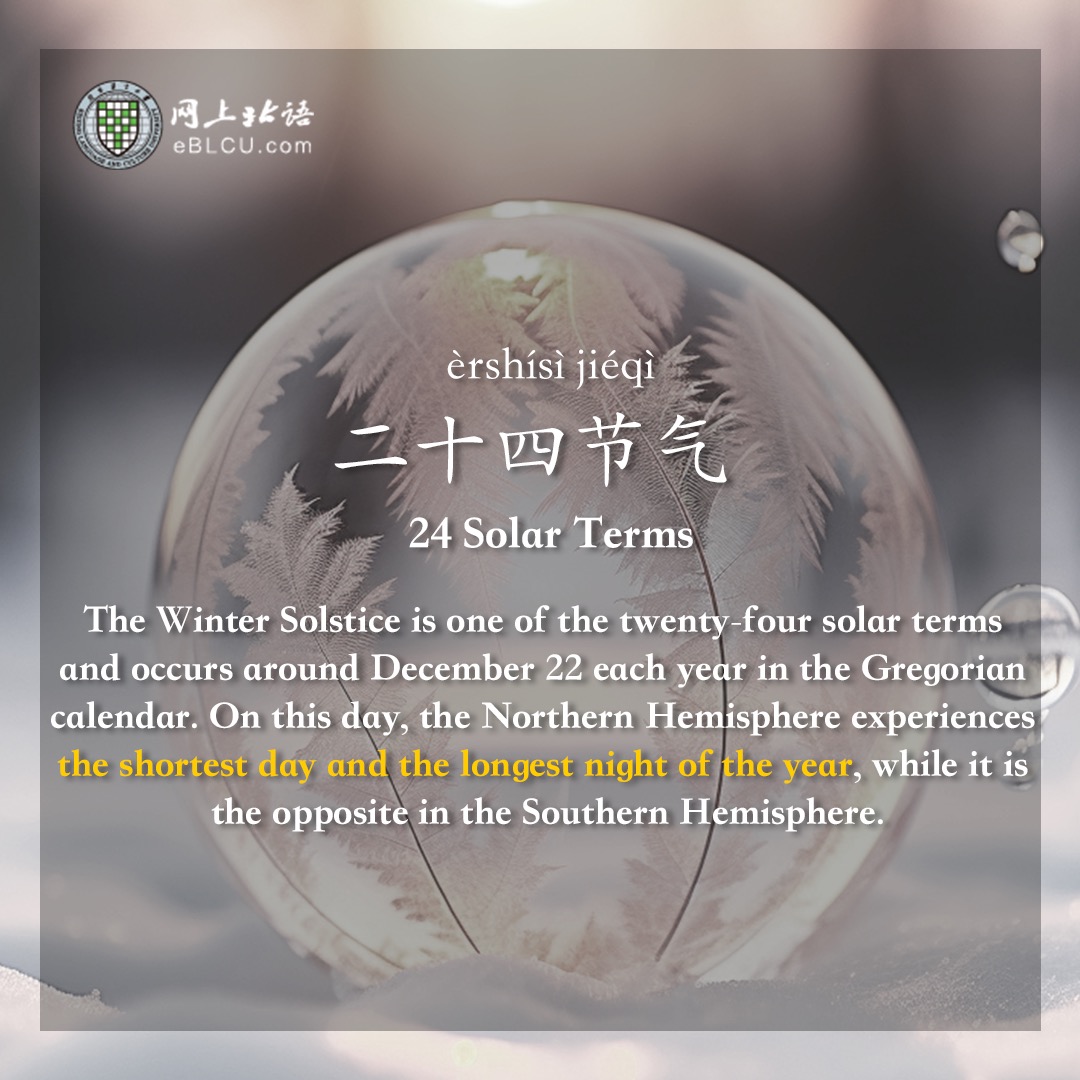 This moment is also culturally rich, representing the delicate balance between Yin ("阴" / yīn) and Yang ("阳" / yǎng). After the Winter Solstice, the days slowly grow longer and the nights shorter, reflecting an increase in Yang and a decrease in Yin.
This moment is also culturally rich, representing the delicate balance between Yin ("阴" / yīn) and Yang ("阳" / yǎng). After the Winter Solstice, the days slowly grow longer and the nights shorter, reflecting an increase in Yang and a decrease in Yin.
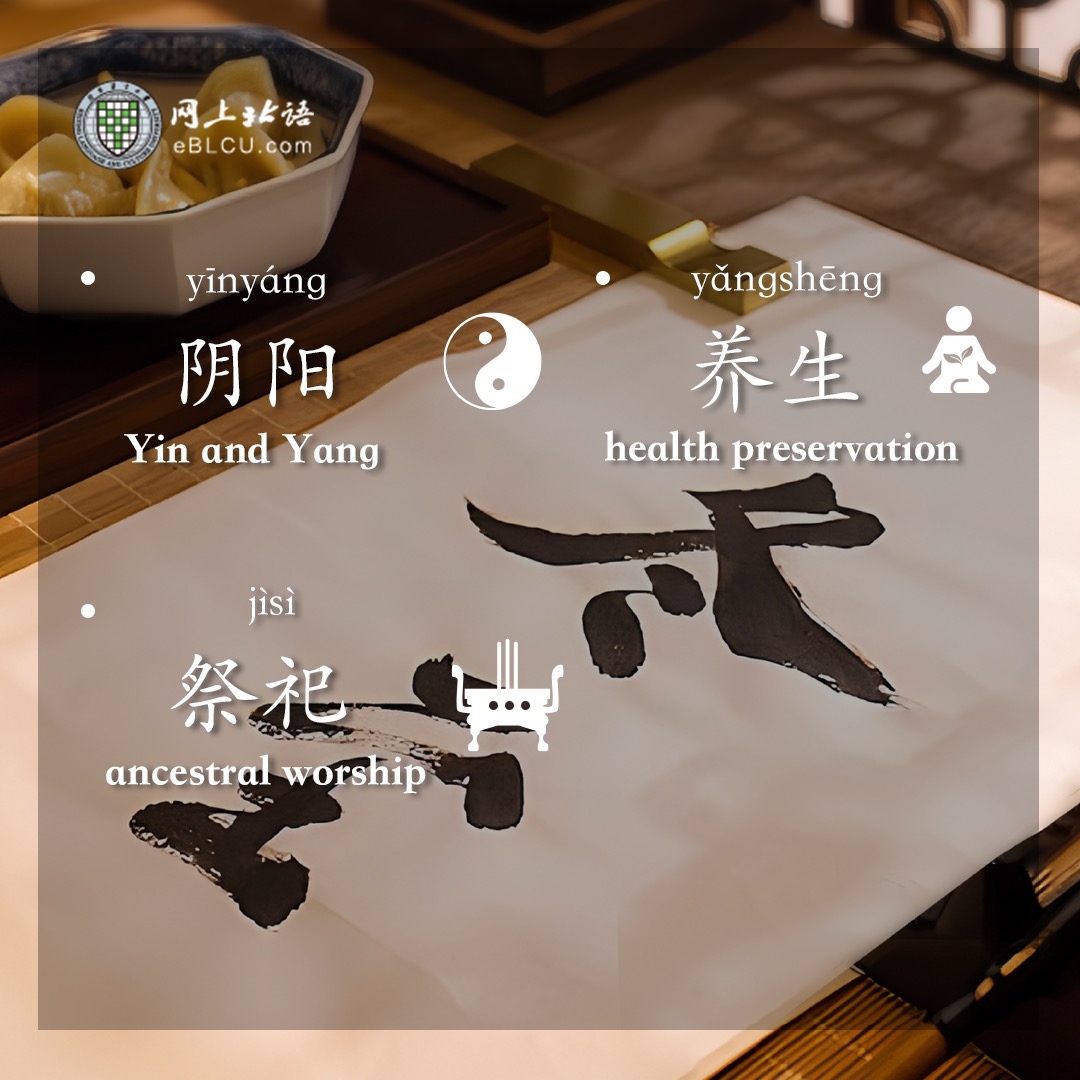 Across China, this day is observed with unique traditions:
Across China, this day is observed with unique traditions:
- In North China (北方 / běifāng), warming up with delicious Chinese dumplings (饺子 / jiǎozi) is a way to celebrate family unity and prosperity.
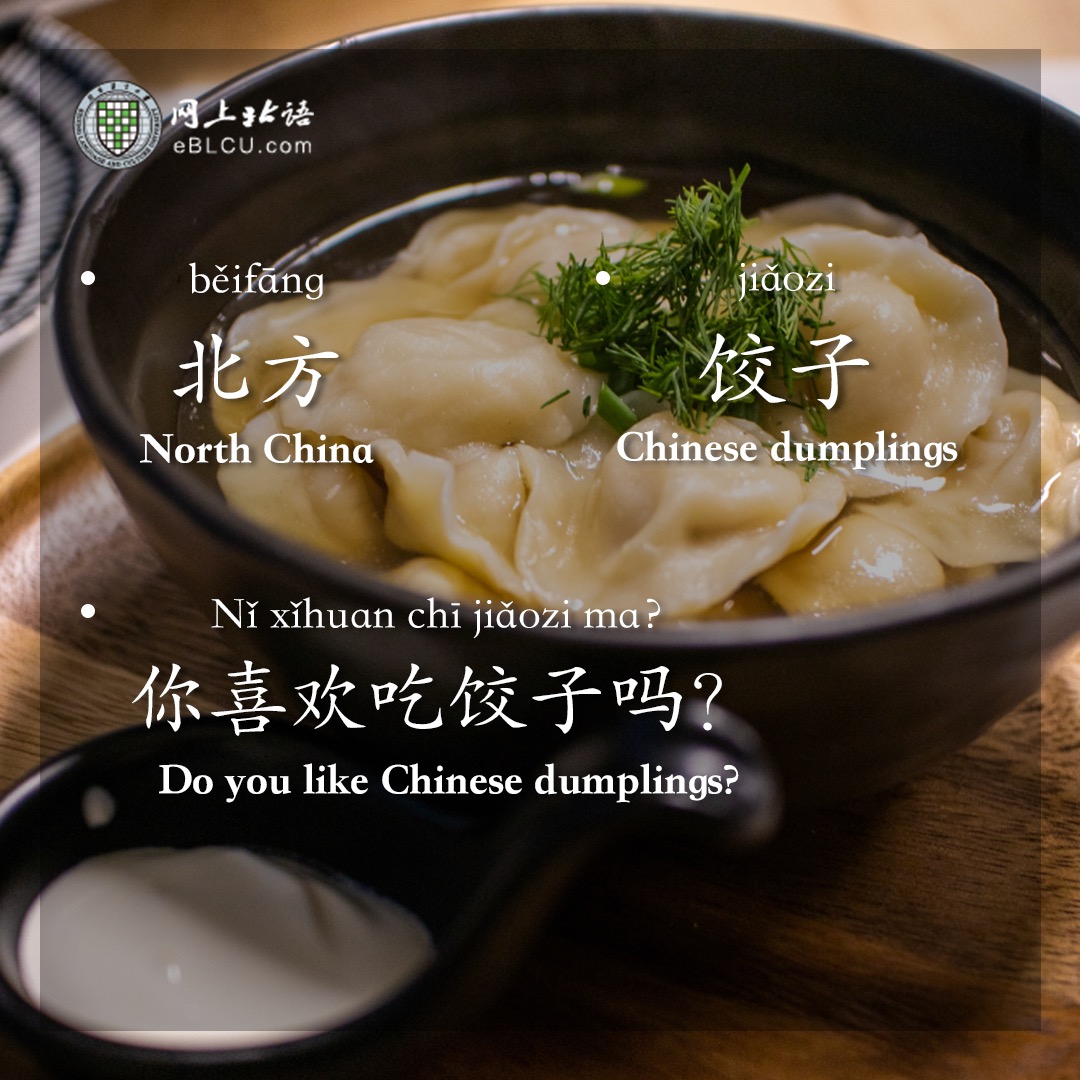
- In South China (南方 / nánfāng), families gather to enjoy sweet or savory glutinous rice balls (汤圆 / tāngyuán), symbolizing togetherness and happiness.
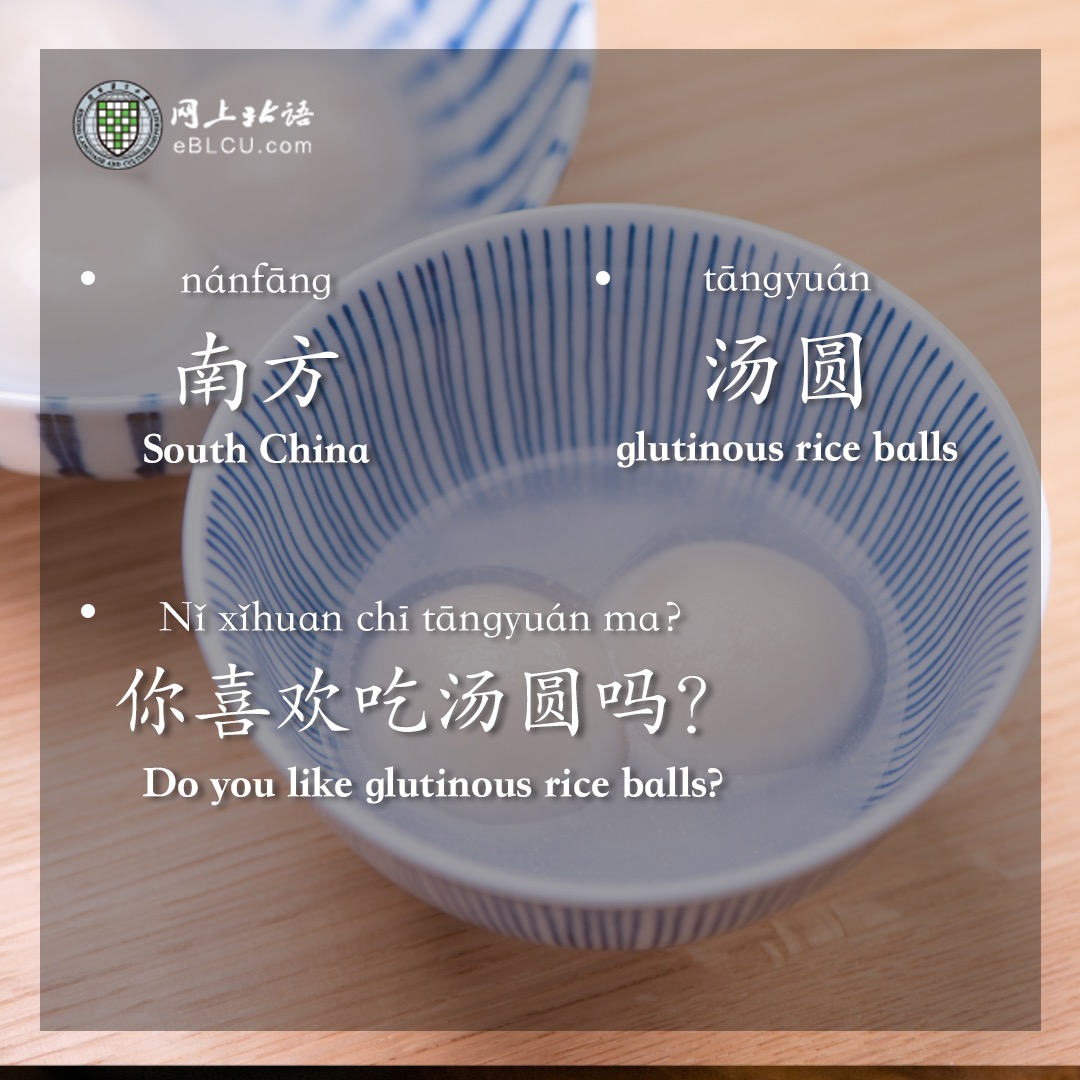
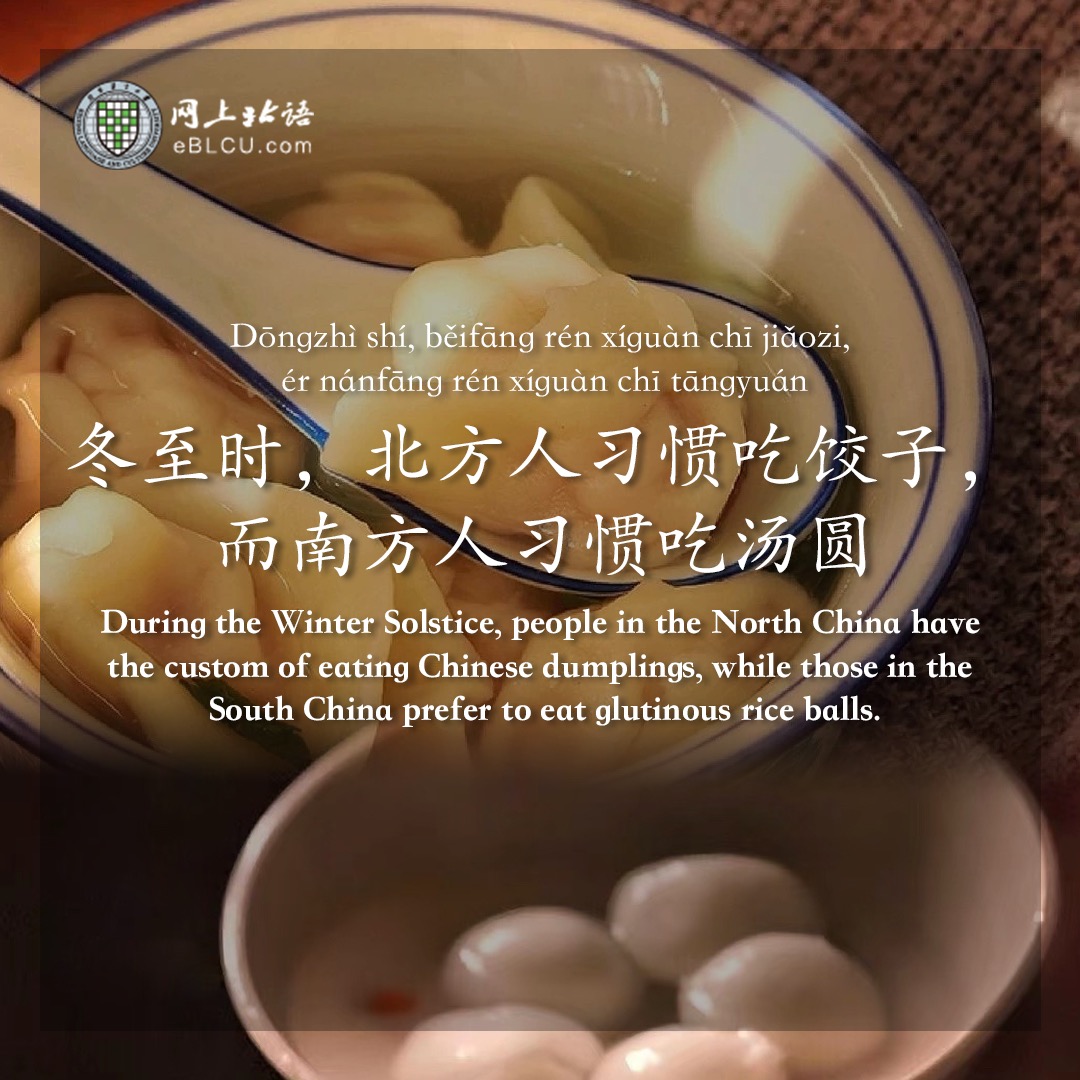
Join us at eBLCU for a captivating journey through the customs and language of the Winter Solstice. Enrich your understanding of this ancient festival and improve your Chinese skills!
Share your thoughts and experiences about this wonderful tradition with us!
